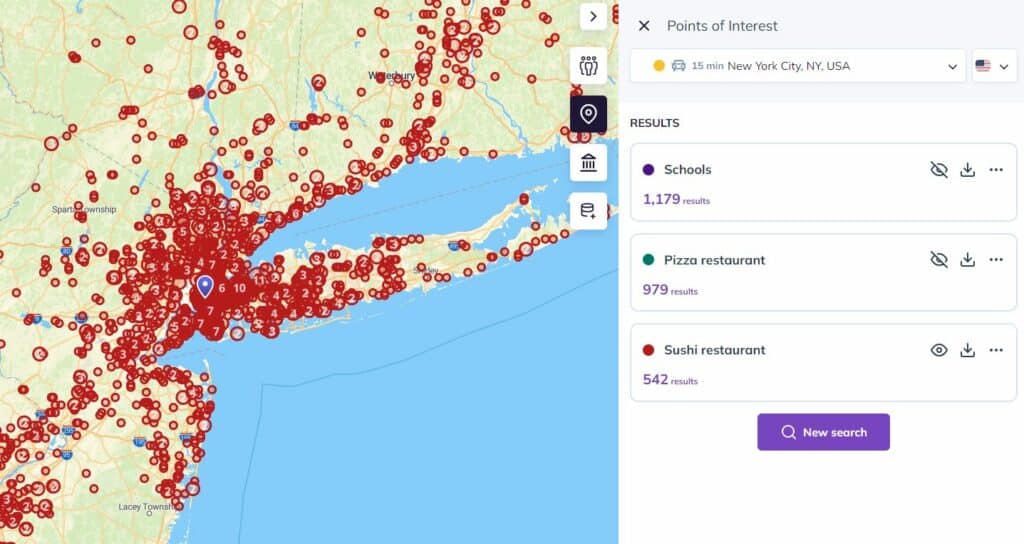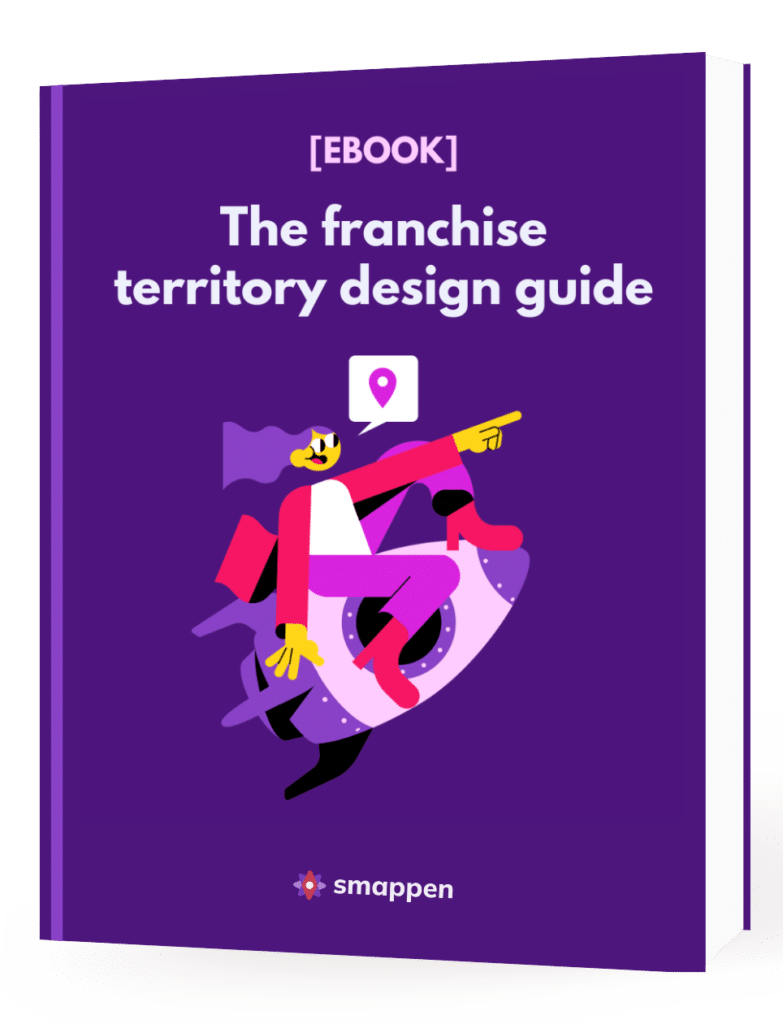Whether it’s for a software development project, a marketing campaign, or a new direction for your overall business strategy, you’ve realized that you need point-of-interest data. You quickly checked Google Maps but figured there has to be a better way to get your hands on this data — in a format that your teams can actually use. That’s where POI database comes in.
Read on to learn more about points of interest, POI databases, and which database you should be using for your project.
What is a point of interest?
A point of interest (or POI) is a point on a map that someone might find interesting. These usually refer to manmade locations — like a business or an institution — but natural landmarks can be a point of interest, too. While it could theoretically be found on a paper map, the term usually refers to how these locations are cataloged in map apps like Google Maps. Whether it’s a store, a hospital, or a residential building, it’ll be represented digitally through a point of interest with data like addresses, opening hours, reviews, and more.
Points of interest can help you find a place to eat, allow business analysts to perform detailed market research, empower organizations to pick the best places for expansion, and more.
Why do you need a POI database?
POI databases hold tons of point of interest data, and are usually offered by some of the biggest tech companies, like Google and Facebook. These databases are often used by developers to build software that depends on this kind of data. That’s because most databases need some level of technical skills to access. But if you have the right POI database, everyone in your business can access it and add location intelligence to their workflows.
The 5 best POI databases
Some of the databases in this list are for more technical users; they’re APIs, meaning you’ll need some coding skills to make the most of them. But there is one option in particular built with the average user in mind, and you won’t need a technical background to use it.
Smappen

Smappen is a location intelligence tool that can double as a POI database since it pulls location data from Google Maps. With Smappen’s built-in tools, you can pull POI data and use it to populate radius maps, combine it with demographic data, or display it on a heatmap.
Smappen is used by retailers, distributors, non-profit organizations, and tons of other businesses as a POI database, a radius map tool, a location intelligence platform, and more.
Why choose this POI database
The single greatest advantage Smappen has over the other POI databases on this list? Its accessibility. You don’t need any technical skills to use Smappen — beyond being able to open a map app and put in an address. That means you can use POI data for all sorts of needs, from planning the location of a new business to performing market research and building out geomarketing campaigns. And since you can use it for free, you can start testing it right now.
SafeGraph Places
SafeGraph Places is a dedicated POI database used by organizations like Domino’s, the USDA, and Spade. It provides deep POI data for millions of locations across the globe, but it also has some additional location intelligence data you might not find in other databases. For example, if you’re running a restaurant franchise, you can use SafeGraph Places to see an estimate of how much it would cost to offer delivery in certain areas.
Why choose this POI database
One of the biggest reasons companies use data from SafeGraph Places instead of something like Google Places? Licensing and flexibility. That’s because the Google Places API doesn’t share all the data Google collects, like building footprint data. SafeGraph, on the other hand, makes all its data available, and you can do just about anything with it without worrying about licensing issues.
Facebook Places
Facebook doesn’t just collect data on its users; it also has an extensive database of POIs. While Facebook users only use this information when checking into or reviewing specific locations, developers can use the Facebook Graph API to access Places data like the name, location, and rating of a specific location.
Why choose this POI database
While Facebook’s API doesn’t give developers access to nearly as much data as the Google Places API, it’ll be a better choice if you’re already using it for your projects. That’s because the Facebook Graph API doesn’t just cover Places, but it also gives you access to ads, Instagram, Pages, and more.
Foursquare Places
Foursquare is a location technology platform used by some of the biggest brands in the world, from Coca-Cola to Uber and Apple. As a fully-featured platform, it includes POI data for more than 200 countries and territories, with over 2.4 million data updates each month. That means you’ll always be working with the latest POI data if you use Foursquare.
Why choose this POI database
Foursquare has more data than just about any other POI database — except maybe for Google’s. Between the sheer volume of data available and how often it’s updated, Foursquare is one of the better options for enterprise-sized businesses that need a massive volume of up-to-date data from across the world.
Keep things interesting
For some software projects, a POI database is absolutely essential, and your developers will likely have their own opinions on which one you should choose. But if you want a POI database that’s usable by everyone — and has a host of other location intelligence features — then you’ll want to give Smappen a go. The best part? You can start using it for free.

